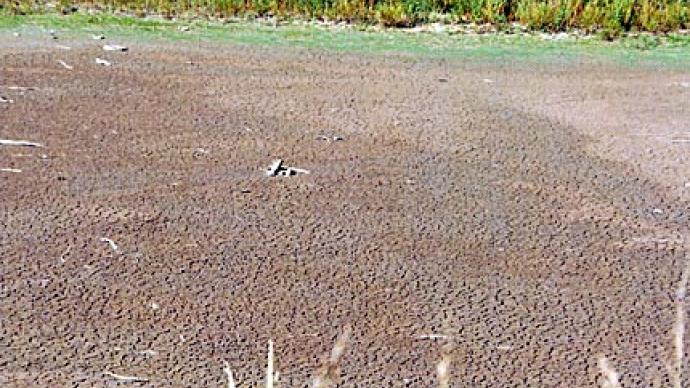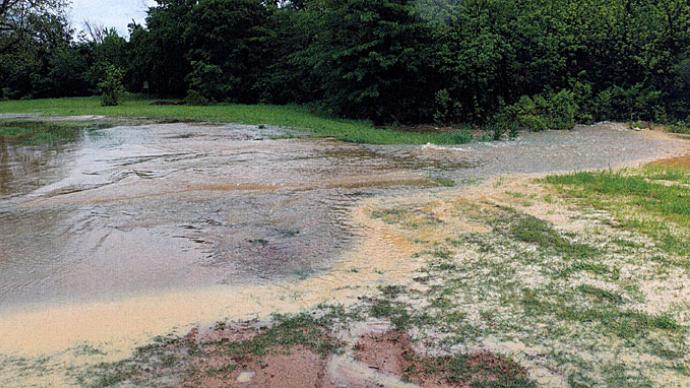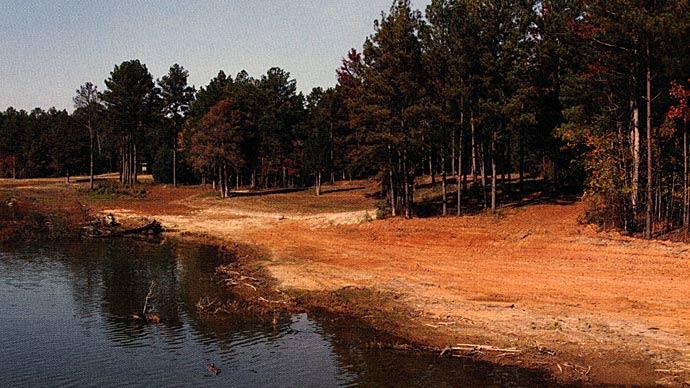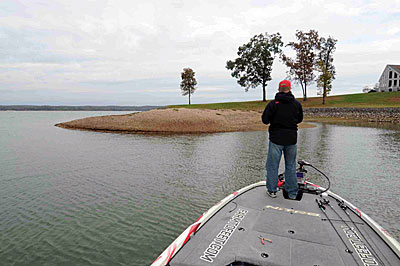
Mother Nature has given Texas pro Keith Combs plenty of experience at fishing for bass during droughts.
The Bassmaster Elite Series competitor has fished during periodic dry spells throughout the years in East Texas and the historic drought of 2011 when Sam Rayburn and Toledo Bend reservoirs dropped 11 to 12 feet below normal pool. Fellow Bassmaster Elite Series pro Andy Montgomery is gaining drought fishing experience in his home state of South Carolina where a prolonged dry spell has caused the closing of nearly all the boat ramps at Lake Wylie due to the low water level.
Fishing on lakes suffering from droughts can be a good news/bad news deal for bass anglers. The good news is the scarcity of cover created by the low lake levels prompts bass to bunch up on any isolated cover they can find. The bad news is the isolated cover holding bass will be hammered by anglers. “A lot of times since there is not a whole lot in the water for the fish to hide around they kind of roam more which can make them really hard to pinpoint,” Montgomery says.
More bad news is the stagnant water that develops in the lake during a drought. “Typically if there is a drought you don’t have a lot of flow in the lake and fish love flow with fresh water coming in,” Montgomery says.
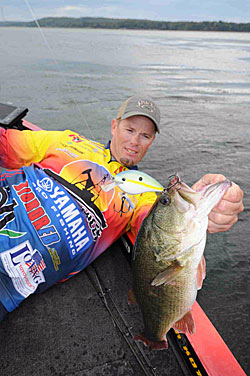
Combs has discovered droughts can provide good bass fishing on lakes filled with grass. “There are always bass that want to be around hydrilla and they will cling to that stuff until there is no more of it in the water,” he says. “I don’t care what time of year it is, when you go to one of those places where there is a very limited supply of hydrilla in the water there is always going to be a good group of fish around it.” Drought narrows down the options then on those lakes and makes it easier to find the fish.
When the prolonged dry weather causes lakes to shrink, Combs prefers fishing the lower end of reservoirs. “Once the lake gets down too low the rivers get very muddy because so many mud banks are now exposed and get chopped up by the wind,” Combs says. “A lot of times that lower end will shine and typically areas (on the lower lake) that were too deep before can become big players.”
When shoreline cover is high and dry, the pros search for exposed offshore targets or bottom structure that always holds bass. Montgomery keys on any docks still sitting in the water, along with stumps and submerged brush piles. “Points are always good so if you find a piece of cover on a point it can be really good,” he says.
While guiding on Falcon Lake during the 2011 drought, Combs had to frequently find new offshore spots since the water kept dropping 4 inches every week. As the lake dropped to 50 feet low, Combs kept keying on isolated rock piles, long points and channel drops. The five-time Bassmaster Classic qualifier found large schools of bass on those spots since the fish had nowhere else to seek refuge.
The pros have found certain lures work best for them in drought situations. Combs favors throwing topwater lures such as buzz baits and Strike King Sexy Dawgs when the hydrilla is in only about a foot of water. When the grass totally dries up, Combs switches to a crankbait that allows him to bang the lure into old isolated cover.
“Most of the time I like to flip (in low water conditions) since I am fishing isolated cover,” Montgomery says. The two-time B.A.S.S. winner flips either a 1/2-ounce Strike King Tour Grade Skipping Jig or a Texas-rigged Strike King Rage Bug matched with a 3/8-ounce Strike King Tour Grade Tungsten Weight and a 4/0 wide gap hook.
The South Carolina pro opts for fast-moving lures such as Strike King KVD 1.0 and 1.5 Square Bill crankbaits or Strike King Red Eye Shad lipless crankbaits if the area finally receives a welcome rainstorm. “One thing good about a drought is when you do get an initial rain the fish get easier to find because they congregate in areas where the fresh rainwater is coming in, which are going to be creeks,” Montgomery says. “The water has been really stagnant and when it finally gets some movement it kind of makes the fish bite.” So Montgomery relies on the crankbaits to help him cover water quicker and find aggressive bass feeding in the fresh water.
Another benefit of a drought is the chance to see bass hideouts exposed by the low water levels. “Our depthfinders are so good nowadays that we can see so much but it is still a good time to go out (and look for exposed cover),” Montgomery says. “I like to look at a place where I have caught them in the past and see what is different about it. On local lakes it is pretty interesting (when the water is so low) to see where you have caught fish in the past and what made that spot so good.”
BassResource may receive a portion of revenues if you make a purchase using a link above.


